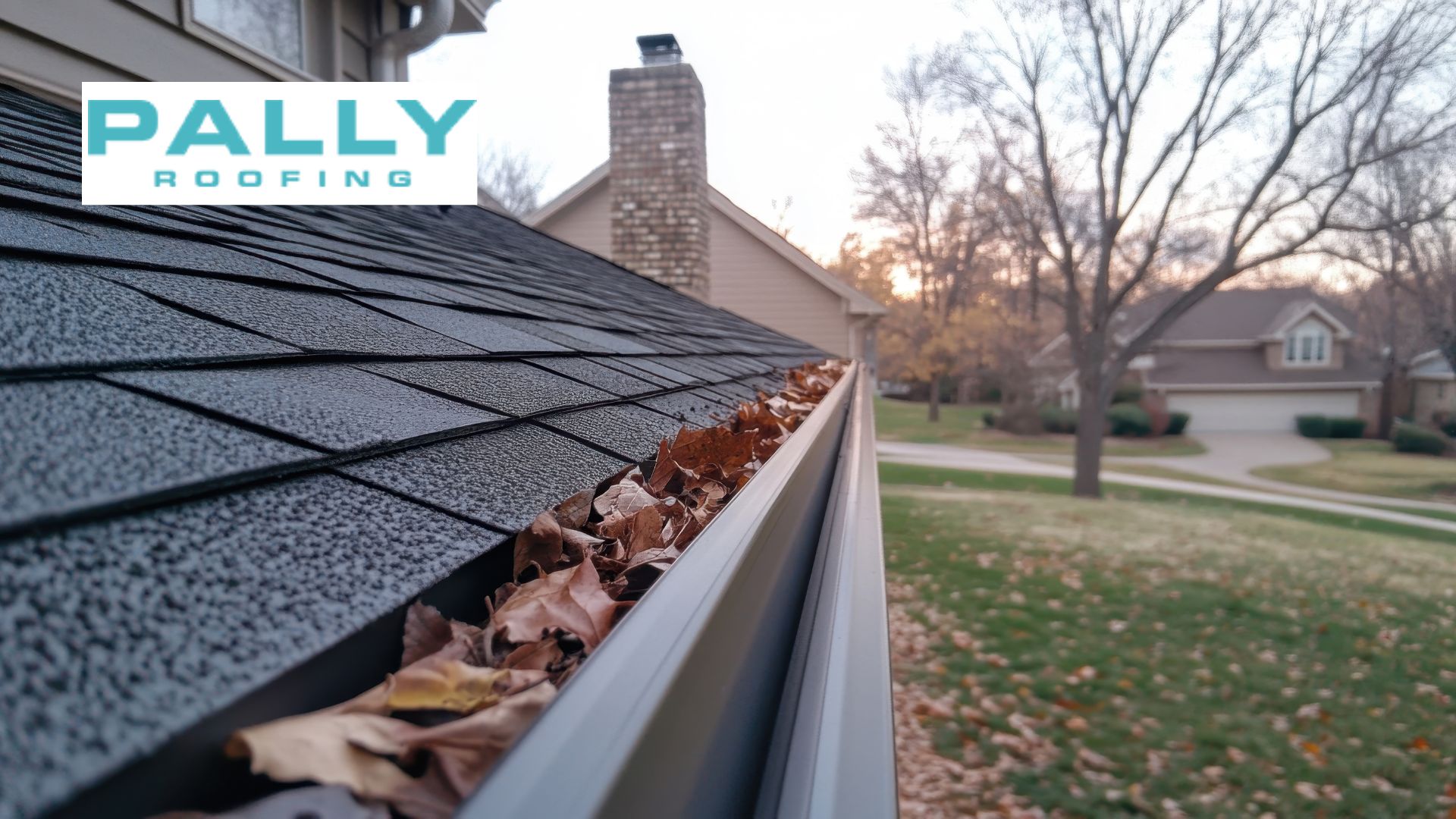Last updated on August 28th, 2024 at 09:21 am
Hail damage on roofs can be a significant concern for homeowners, particularly in regions prone to severe weather conditions. From cracked shingles to dented gutters, the aftermath of a hailstorm can wreak havoc on the structural integrity of your roof, leading to potential leaks and further deterioration over time.
Table of Contents
At Pally Roofing, we understand the importance of safeguarding your home against hail damage on roof. With our extensive experience and expertise in the roofing industry, we’ve witnessed firsthand the devastating effects that hailstorms can have on residential properties.
That’s why we’re here to emphasize the critical need for timely inspection and repairs to mitigate the impact of hail damage and protect your investment.
Signs of Hail Damage on Roof
Identifying hail damage on your roof is crucial for maintaining its integrity and ensuring the longevity of your home. Here are some common signs that homeowners can look for to determine if their roof has been affected by hail:
Dented Gutters: Dented gutters are one of the most visible signs of hail damage on roof. Hailstones can leave behind indentations or even cause cracks in gutters, indicating the force of impact during a hailstorm.
Cracked Shingles: Hailstones can cause shingles to crack or break, compromising their ability to protect your roof from water infiltration. Look for signs of cracked or missing shingles, particularly along the ridges and edges of your roof.
Granule Accumulation in Gutters: As hailstones strike the surface of your roof, they can dislodge granules from the shingles, which may accumulate in the gutters. Check your gutters for an excessive buildup of granules, as this can indicate significant roof damage.
Visual Examples of Hail Damage

1- Asphalt Shingle Roof: Hail damage on an asphalt shingle roof may appear as circular or irregularly shaped indentations, often accompanied by cracks or splits in the shingles. These damaged areas may also exhibit granule loss, exposing the underlying substrate.
2- Metal Roof: Hail damage on a metal roof can manifest as dents or dimples in the metal panels, particularly along the exposed surfaces. Depending on the severity of the hailstorm, these dents may vary in size and depth.
3- Tile Roof: Hail damage on a tile roof may result in chipped or fractured tiles visible along the edges or corners of the roof. Additionally, hailstones can dislodge the protective coating on tiles, leaving them vulnerable to water damage.
How to Inspect for Hail Damage
Conducting a thorough inspection for hail damage on roof is essential for identifying potential issues and ensuring the integrity of your roof. Here’s a step-by-step guide to help you effectively assess your roof for hail damage:
- Safety First: Before beginning the inspection, prioritize safety by ensuring that the weather conditions are suitable and that you have the necessary safety equipment, such as a sturdy ladder and appropriate footwear.
- Visual Inspection: Start by visually inspecting the exterior of your roof from the ground. Look for any signs of damage, such as dented gutters, cracked shingles, or granule accumulation in the gutters.
- Check Attic Space: If accessible, inspect the attic space for signs of water infiltration or damage. Look for water stains on the ceiling, damp insulation, or visible light coming through the roof, as these may indicate areas of damage.
- Use Binoculars: For a closer examination, use binoculars to inspect the roof from a safe distance. Pay close attention to the condition of the shingles, focusing on areas more susceptible to hail damage on roof, such as valleys, ridges, and eaves.
- Look for Indentations: Inspect the surface of the shingles for indentations or dimples, which may indicate hail impact. Depending on the size and force of the hailstones, these indentations may vary in size and shape.
- Check for Cracks: Examine the shingles for any signs of cracks or fractures, particularly along the edges or corners. If left unaddressed, cracked shingles can compromise your roof’s waterproofing capabilities and lead to further damage.
- Assess Granule Loss: Check for granule loss on the surface of the shingles, as hailstones can dislodge the protective granules, exposing the underlying asphalt layer. Excessive granule loss can accelerate the deterioration of your roof and may require prompt repairs.
- Consult a Professional: If you need clarification on the extent of hail damage on roof or notice any significant issues during the inspection, consider consulting a professional roofing contractor for a more thorough assessment.
At Pally Roofing, we understand the importance of a comprehensive inspection to effectively identify and address hail damage on roof. Our team of experienced professionals is equipped with the knowledge and tools necessary to conduct thorough inspections and provide accurate assessments of your roof’s condition.
Repairs for Hail Damage on Roof
Addressing hail damage on roof promptly is essential to prevent further deterioration and protect the structural integrity of your roof. Here are the different repair options available for repairing hail damage:
- Patching Cracked Shingles: If your roof has sustained damage to individual shingles, such as cracks or fractures, patching may be a viable solution. This involves carefully removing the damaged shingles and replacing them with new ones to restore the roof’s integrity.
- Replacing Damaged Flashing: Hailstorms can damage the flashing around chimneys, vents, and skylights, compromising their ability to prevent water infiltration. Replacing damaged flashing is crucial to maintaining a watertight seal and preventing leaks in your home.
- Repairing Dented Gutters: Dented gutters can impede proper drainage and lead to water pooling on your roof, increasing the risk of water damage. Repairing dented gutters may involve reshaping them to restore functionality or replacing them altogether if the damage is severe.
- Evaluating Structural Damage: Hailstorms can sometimes cause structural damage to the roof, such as weakened rafters or trusses. It’s essential to assess the extent of structural damage and address any issues promptly to ensure the safety and stability of your home.
DIY vs. Professional Repairs
While some minor repairs, such as patching cracked shingles, may be suitable for DIY enthusiasts with the necessary skills and tools, it’s essential to exercise caution when attempting roof repairs yourself. Working at heights can be dangerous, and improper maintenance may exacerbate the damage or void your roof warranty.
For more complex repairs, such as replacing damaged flashing or evaluating structural damage, it’s best to enlist the help of a professional roofing contractor.
A qualified roofer will have the expertise and experience to accurately assess the damage’s extent and recommend appropriate repairs to restore your roof’s integrity.
Preventative Measures and Maintenance
Protecting your roof from hail damage on roof requires proactive measures and regular maintenance to ensure its longevity and durability. Here are some tips to help homeowners safeguard their roofs from hail damage in the future:
- Install Impact-Resistant Shingles: Consider investing in impact-resistant shingles designed to withstand the force of hailstones more effectively. These shingles are specially engineered to provide excellent durability and resilience against hail damage on roof, reducing the likelihood of costly repairs.
- Trim Overhanging Branches: Overhanging branches can pose a risk to your roof during a hailstorm, increasing the likelihood of damage from falling debris. Trim back any branches that hang over your roof to minimize the potential for impact and protect your roof from harm.
- Reinforce Roof Structures: Ensure that your roof structures, such as rafters and trusses, are adequately reinforced to withstand the force of hailstones. Strengthening these components can help minimize the risk of structural damage and prolong the lifespan of your roof.
- Install Protective Roofing Accessories: Consider installing additional protective accessories, such as hail guards or protective membranes, to protect against hail damage on roof. These products can help absorb the impact of hailstones and reduce the risk of damage to your roof.
- Schedule Regular Roof Inspections: Regular roof inspections are essential for identifying and addressing potential issues early before they escalate into costly repairs. Schedule annual inspections with a professional roofing contractor to assess the condition of your roof and catch any damage or wear and tear early on.
- Perform Routine Maintenance: In addition to inspections, perform routine maintenance tasks, such as cleaning gutters, removing debris, and checking for loose or damaged shingles. Addressing minor issues promptly can help prevent them from worsening and protect your roof from hail damage on roof.
Conclusion
In conclusion, safeguarding your home against the devastating effects of hail damage is a proactive endeavor that requires diligence and regular maintenance.
At Pally Roofing, we stand ready to assist homeowners with a comprehensive range of roofing services, from inspections to repairs and installations. With our expertise and commitment to quality craftsmanship, we aim to empower homeowners to take proactive steps in maintaining their roofs and safeguarding their homes against the unpredictable forces of nature.
Contact us today to schedule a consultation and experience the peace of mind of knowing your roof is in capable hands.
FREQUENTLY ASKED QUESTIONS!
How to tell if roof has hail damage?
Look for dented gutters, cracked shingles, and granule loss on the roof surface.
What does hail damage look like on a shingle roof?
Hail damage on a shingle roof appears as circular indentations, cracks, and granule loss.
Size of hail to damage roof?
Hail as small as a dime can cause damage, but larger hailstones, typically golf ball-sized or more giant, pose a greater risk of significant damage.
Author
-

With more than 16 years of hands-on experience, Phillip Schmucker is the knowledgeable owner of Pally Roofing. His dedication to superior roofing services has earned him a reputable place in the industry. Phillip also shares his extensive expertise through writing, providing readers with practical tips and professional advice on various roofing topics. Follow him on LinkedIn.
View all posts






